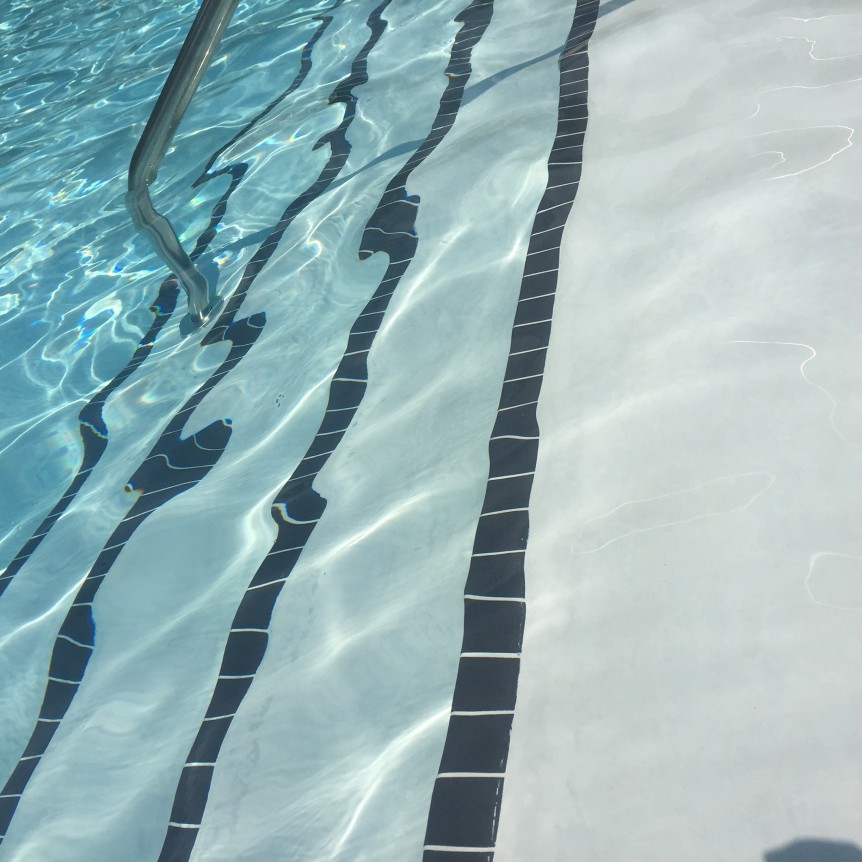Growing up in Louisiana (the land of bayous, rivers and lakes), my brother, sister and I spent every day of summer in the water. Our fingers and toes would sometimes bleed from how shriveled and tender they became from all that time in the water. While I don’t recommend this level of water obsession to everyone, summers are made for swimming.
Bodies of water
There are a wide variety of appropriate places to swim. The safest and, usually, most convenient are public pools in the community or fitness clubs. The water quality at public swimming pools are generally very good with little cause for concern. Surprisingly, even well maintained and monitored community pools can harbor a number of unhealthy organisms and diseases. Be sure your kid has some basic information on minimizing getting sick from swimming in a public pool.
You may be lucky enough to live near a river, pond or lake suitable for swimming. While community pools are likely to be relatively sanitary, natural bodies of water are not necessarily so. Check with local authorities who regularly monitor recreational water quality in your area just to be sure.
Water safety
It is important to go over basic water safety with your kids. Start with whether they can swim! (One way for your kids to be safe in the water is to sign them up for swimming lessons. They can really benefit from knowing the basics of floating, treading water and different swimming strokes.) If they are poor or unskilled swimmers then make sure they have floatation devices and stay in water that is no more than waste deep.
Teenagers are all about testing themselves whether that means crazy jumps into the pool (and on top of their friends) or leaping from an overhang a river or lake. Talk to them about what makes a “reasonable” risk and what is a foolish risk. Help them think through how to assess the risk while still being able to engaging in a little risk taking.
There are a whole host of hidden dangers in the water. The most obvious is rocks and objects hidden beneath the surface when you are jumping in (not to mention, the presence of another person you could jump on top of). Go over the importance of checking out the general area before taking a running leap. Review the importance of waiting until the area is cleared of other swimmers before jumping.
Running water (e.g., rivers, large streams, oceans) have hidden eddies and currents that can quickly and unexpectedly drag you away from your friends or under water. Talk to your kid about what to do if they are swept away by a river current or ocean rip tide.
Keeping track of each other while playing in water is another important basic safety rule. Just being aware of the importance of this simple and casual safety plan can often be enough. It may not be necessary to actually have your teenager identify a swim buddy. But, no one should ever swim alone.
Go over what your kid should do if someone gets injured. What if it is superficial like a scrape or cut? (Carry a basic first aid kit-adhesive bandages, triple antibiotic cream, ace bandage, Benadryl, gauze, adhesive tape.) What should they do if it is a sprain or apparent broken bone? (Stabilize the bone and seek medical attention.) And, worse still, what do you do if someone is drowning? (Look for any other way to help them stay on the surface before you go out after them yourself-reach, throw, row, go. But, mostly, get an adult to help.) The family could also consider taking a course on CPR from the Red Cross since everyone should know how to resuscitate someone who has stopped breathing.
Sun and skin cancer
Sun exposure when young is a strong predictor of skin cancer in adulthood. Talk to your kid about the importance of using precautions against excessive exposure to sun. Make sure you bring the appropriate clothes, hats, sunglasses and especially a water resistant broad-spectrum 30spf or higher sunscreen.
Equipment and Toys
Necessary equipment include towels and water proof shoes for the hot concrete or walking in the river or lake. Everyone might also benefit from a change of clothes for the ride home afterward.
There are an endless array of flotation devices on which to lounge while in the water. And many of them are inexpensive. The same is true for toys to use in the water-from squirt guns to underwater swimming games to water volleyball complete with floating nets. You are limited only by pre-planning and money.
Eating, drinking and making merry
Bring food (that holds up well in wet hands). Bring drinks. And, they can eat all they want and immediately go swimming because the “wait or you’ll get cramps and drown” caution is bunk.
Pay attention to the time
Swimming is a great physical activity. It can wear you out before you know it. Pay attention to your kid’s fatigue. Pay attention to YOUR fatigue (you are getting older, after all). Too much sun can also result in heat stroke. Don’t overdo it. You can always hit the pool again another day.
Any activity that provides physical exertion will benefit your kid. Swimming is a great way to work in healthy activity with real fun. This makes it a hard-to-fail family activity.

